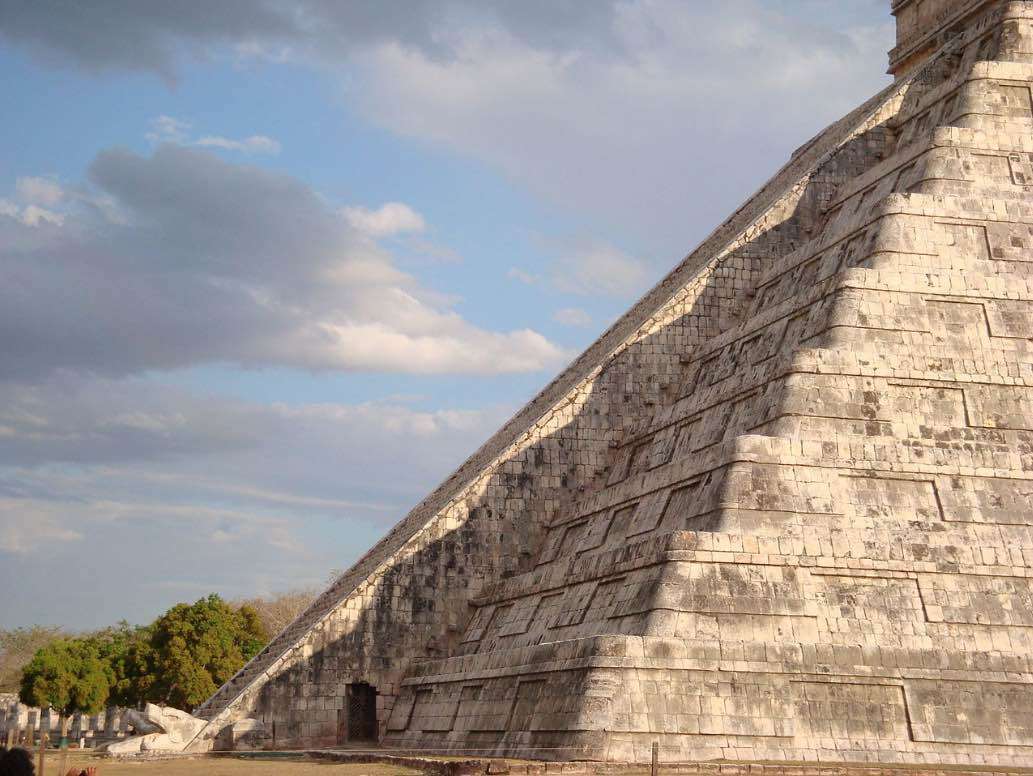Amazing Bubble Wrap Artist Creates Masterpieces by Injecting Paint Into Each Bubble
Canadian-born artist Bradley Hart creates incredible, and highly sought after, artworks by injecting bubble wrap with paint.

As the vernal equinox heralds the first day of spring, all across the world, unique phenomena can be seen on this day alone.
For thousands of years humans have known that around the day marked on the Gregorian calendar as March 20th (or 21st, but we'll get into that later) the day and night were of equal measure, and the sun rose perfectly due east, and set perfectly due west.
This led to all manner of mythical belief systems, fascinating astronomical calculations, and grand construction projects. Especially for people living in the temperate zones, where seasonal climates are so impactful on daily life, the equinox has a kind of mystique, that can make people take up gardening, read an almanac, or keep an eye out for migratory birds.
The equinox is a fascinating event that has captured human minds for thousands of years, and so it's no surprise there's a lot to learn about it
If you believe that the equinox is on the 21st of March, you may be showing your age. The last time the equinox was on the 21st of March, Barack Obama was gunning for the presidency.
This is because we use the Gregorian calendar, and the placement of the equinox changes every other century. For those growing up with the equinox on the 21st, you won't see that again until the 22nd century.
These days the equinox arrives on the 20th of March, and there it will stay for all of our lives, and our children's lives, and most of their children's lives.
It highlights the brilliance of ancient astronomers, who were able to note the subtle differences in the placement of the sun in the sky not just year by year, but century by century; and in the case of the Mayan's ‘long count' cycle, millennia by millennia.
The word equinox comes from Latin words which together mean "equal night" and one would be forgiven for assuming this means that the day and night period of the equinox is perfectly 50-50.
However, Bob Berman, resident astronomer at the Old Farmers Almanac, notes this year that there is more sun than moon by a few minutes due to the earth's atmosphere refracting the light, or bending it around the earth. Also, the fact that the sun gives off a wide circle of light rather than a single point means there's always going to be variations.
The real date, as Berman points out, of equal light and dark is a few days before the equinox.
In Maryland, among the boating community, it is a tradition to wear socks only during the winter. Certainly for those who do their business with the sea, there is a tendency to adopt superstitions, but this also seems like a powerful ritual of optimism for warmer weather.

Every year on the vernal equinox Annapolis yacht clubs, the maritime museum, dockyard workers, and even rangers at the Virginia State Parks celebrate the Burning of the Socks festival, welcoming warm waters back the expansive Chesapeake Bay.
The annual sock-burning events have became family-friendly parties, and generally go with eating oysters and other seafood. Officially they take a vow not to wear socks until the next winter.
The movement of the sun, moon, and stars were closely observed and tracked by ancient peoples. Maybe it's because it had a lot of relevance with their agricultural success, but great civilizations across the ages have enshrined the passage of the equinox in their architectural designs—often aligning their buildings' foundations with certain moments during the solstice, equinox, or both.
Chichen Itza is one of the most famous monuments of Mesoamerica, and the great step Pyramid of Kulkulcan in Mexico is constructed in such exquisite connection to the equinox that it draws thousands of tourists on this particular day every year.

The shadows of this structure, built in the 8th–12th century AD, formed by the equinoctial sun evoke the image of the "Sun Serpent" slithering down the north side of the pyramid.
Other monuments like Stonehenge, Newgrange, built by the ancient Irish, Machu Picchu, and the Pyramid of Khafre, are also aligned with the equinox in unique ways.
In connection with the rhythms of the land, sea, and heavens, we can find a deeper connection to nature and the world around us, as well as our ancestors who discovered this unique day in the cycle of the earthen year.
CELEBRATE Spring By Burning Your Socks and Sharing This on Social Media…
Be the first to comment